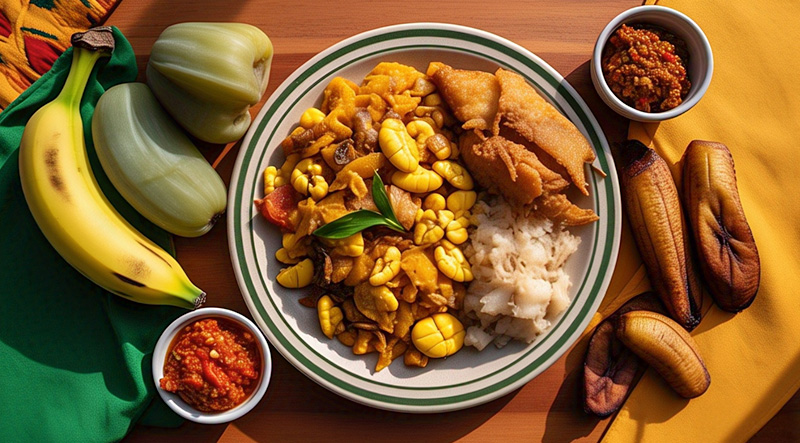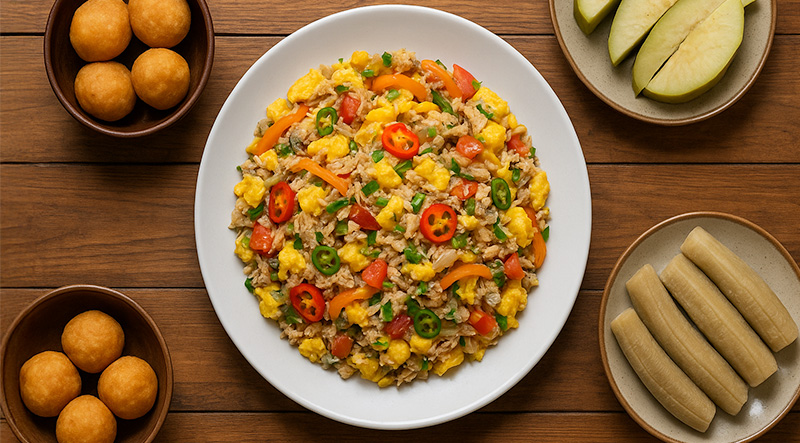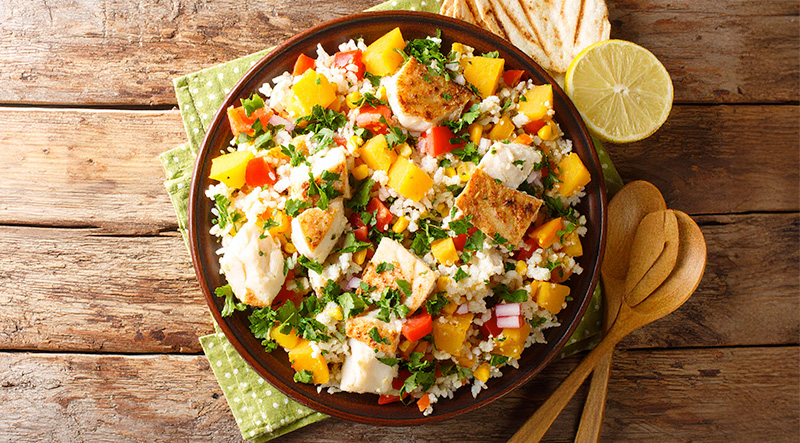Ackee and saltfish, the national dish of Jamaica, is a colorful celebration of island flavor that embodies the spirit of the Caribbean in each bite. This savory-sweet masterpiece combines flaky, seasoned salt cod with buttery ackee fruit, which is golden and tender like scrambled eggs, and is sautéed with fresh herbs, onions, and fiery scotch bonnet peppers. It's more than just breakfast when served hot with boiled bananas, breadfruit, or fried dumplings; it's a hearty, tasty embrace from Jamaica's rich cultural past. One taste will show you why this dish is the pride of the island, whether you're a local or just visiting. Read More...
The Rich History of Jamaica’s National Dish: Ackee & Saltfish:
Jamaica’s national dish, Ackee and Saltfish, is a symbol of the island’s cultural resilience, culinary innovation, and deep-rooted African heritage. A colorful and savory staple, this beloved dish tells a story that goes beyond the plate—connecting the threads of colonialism, trade, and tradition that have shaped Jamaican identity.
From West Africa to the West Indies: The Journey of Ackee:
The ackee fruit (Blighia sapida) is not native to Jamaica. It originated in West Africa, where it was consumed and valued for centuries. It made its way to the Caribbean in the 18th century aboard slave ships as part of the transatlantic slave trade, likely brought by enslaved Africans who sought to recreate familiar foods in their new environment.
The fruit eventually flourished in Jamaica’s tropical climate and became so culturally significant that it was declared the national fruit. However, it must be prepared with care—ackee is toxic when unripe and must only be consumed when the fruit has naturally opened on the tree.
Saltfish: A Colonial Commodity:
Salted codfish (saltfish), on the other hand, comes from the cold waters of the North Atlantic—far from the warm shores of the Caribbean. During the colonial era, European traders imported saltfish as a cheap protein to feed enslaved Africans on plantations. Preserved through salting and drying, it was durable and inexpensive, making it an ideal export from countries like Canada, Norway, and Portugal.
Over time, this humble ingredient became a staple in Jamaican households. Through creative adaptation, Jamaican cooks transformed it from survival food into a flavorful cornerstone of national cuisine.
A Fusion of Necessity and Ingenuity:
The fusion of ackee and saltfish is a brilliant example of how Jamaican cuisine developed through adaptation and cultural blending. Enslaved Africans combined these ingredients with native spices and vegetables like scotch bonnet peppers, onions, tomatoes, and thyme—crafting a dish that’s both hearty and rich in flavor.
Traditionally, the dish is sautéed in oil after the saltfish has been soaked to reduce its saltiness, and the ackee is gently cooked until tender. The result is a savory, buttery medley that mimics scrambled eggs in texture but bursts with island flavor.
A Dish with Deep Roots and National Pride:
Ackee and Saltfish is more than a breakfast dish—it’s a national symbol. Often served with fried dumplings, boiled green bananas, breadfruit, or yam, it represents Jamaica’s resourcefulness, flavor, and multicultural past.
In 1971, the Jamaican government officially recognized Ackee and Saltfish as the national dish, and today it is a favorite on tables from Kingston to Montego Bay and beyond. Its legacy continues to inspire chefs worldwide who look to Caribbean cuisine for authenticity and bold flavor.
A Taste of History in Every Bite:
Ackee and Saltfish tells the story of Jamaica’s journey—from pain and survival to pride and independence. Each ingredient reflects a chapter in the island’s history, and together they create a dish that is as resilient, flavorful, and dynamic as the Jamaican people themselves.
Whether enjoyed in a bustling market, a family home, or a high-end restaurant, Ackee and Saltfish is a delicious tribute to Jamaica’s enduring spirit and culinary heritage.
Prepare the Saltfish:

Prepare Ackee (if using fresh):
Note: Canned ackee is precooked and ready to use—just rinse gently and drain well.
Sauté the Base:

Add the Saltfish:
Add the Ackee:

Suggested Sides:
Ackee and Saltfish is traditionally served with:
Cooking Tips:
The origins of this dish are rooted in Jamaica’s past. Ackee was brought from West Africa during the 18th century, while salted cod came from Europe as part of the colonial trade system. What began as survival food for enslaved Africans evolved into a culinary icon through Jamaican creativity and cultural pride.
Today, Ackee and Saltfish is a symbol of resilience and identity—a dish passed down through generations, carrying the flavors of history and the warmth of home.
The total preparation time for Ackee and Saltfish is approximately 45 to 60 minutes, including both prep and cooking. Desalting the saltfish—either by soaking overnight or boiling—can take about 15–20 minutes if using the quick boil method. Chopping vegetables and prepping the ackee (if using fresh) takes another 10–15 minutes. Cooking everything together in the skillet, from sautéing the aromatics to gently folding in the ackee, takes about 15–20 minutes. Using canned ackee and pre-soaked saltfish can significantly reduce prep time, making this flavorful dish quicker to prepare on busy mornings or for a weekend brunch.
A single serving of Ackee and Saltfish, based on the recipe provided, contains approximately 300–400 calories, depending on portion size and preparation. The main calorie contributors are the ackee (rich in healthy fats), saltfish (protein), and the sautéed vegetables in oil. One cup of canned ackee provides about 150 calories, while 2–3 ounces of saltfish adds roughly 100–120 calories. The added oil and vegetables account for another 50–100 calories. If served with traditional sides like fried dumplings or breadfruit, the total calorie count can rise significantly, making it a hearty and satisfying meal.







